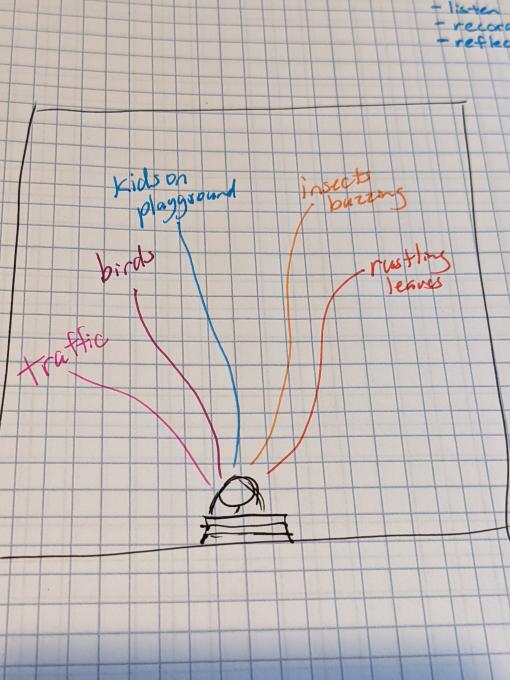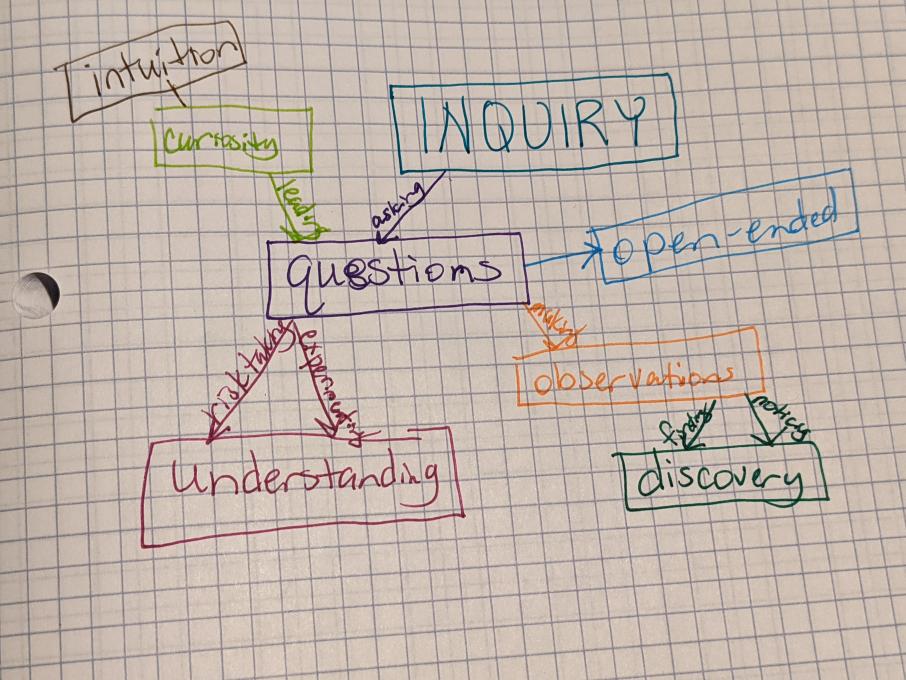Kimberly
Forum Replies Created
Viewing 19 posts - 1 through 19 (of 19 total)
-
KimberlyParticipantI am intrigued about the use of rubrics, but since I will be doing my project as an after school club, I'm not sure how that would work.
-
KimberlyParticipantAssessment of my project will consist of anecdotal records of observations kept by me, blog posts created by students regarding what they observe and the conclusions (if any) to which they arrive. The final evaluation will be in the project that they share with our school community.
-
KimberlyParticipantI understand about the time challenge! I'm wondering how that will affect my project as well.
-
KimberlyParticipantAs a librarian I have not led nor assessed inquiry-based activities, and even when I was in the classroom, none of the science we did could accurately be described as inquiry-based. I am excited and apprehensive about venturing into this citizen science project with my students.
-
KimberlyParticipantRussell, my school informally does this each year culminating in a Monarch Day. I would love to see my school doing this more formally.
-
KimberlyParticipantI looked at Nature's Notebook https://www.usanpn.org/natures_notebook It is an easily-accessed citizen science project that measures changes in nature around you. With fall coming soon I think the Green Wave campaign would be an amazing citizen science project for the younger students at my school. This database is accessible to anyone and they provide a variety of campaigns. My students could look at data from previos years to determine if leaf color change is happening earlier or later than in previous years.
-
KimberlyParticipantElandriel, I think that's a great way to get kids to think deeper by asking them why. I'll keep that in mind. Thanks!
-
KimberlyParticipantI encourage my students to research things they want to learn about through a project called Genius Hour. I can see taking it further and having students either tie their Genius Hour project to what they are learning in science and designing their own investigation or investigating something they are curious about outside the school setting.
-
KimberlyParticipantMary, I am getting ready to start Project Feeder Watch with a group of students and am concerned about some of the things you mentioned.
-
KimberlyParticipantI participated in the Monarch Larva Monitoring Project because my school does work with monarch butterflies and it carries on the work of our STEM-AG teacher who recently passed. I was able to go to the butterfly garden we have established at a local park and look for eggs and larva. It was raining on the day I went, so I only found a few eggs and one larva. Possible learning outcomes include: life cycle of the butterfly, eating habits (time of day, how many flowers in an area), length of time between laying of the eggs and seeing butterflies, and which animals prey on the larva. Students could even design a way to help protect the larva from predators.
-
KimberlyParticipantAmy, your response makes me think of something that I heard a while ago. Something along the lines of rather than being the sage on the stage, we should be willing to be the meddler in the middle. That way our students come to see us as life-long learners.
-
KimberlyParticipantI think we can be catalysts for students to obsserve and wonder by first modeling our own wonderings. Start with, "Hey, everyone! I saw this _________ yesterday and it made me wonder __________." Then ask them to share about things they see each day that make them wonder. If there is a student who never has anything to share, perhaps you could invite them to make observatiosn at recess and then share any wonderings from there.
-
KimberlyParticipantAshley, I agree! With the year we have had, this may be a great thing to help kids get calm.
-
KimberlyParticipantThe most impactful thing about creating a sound map is it forces you to be still and focus your attention. It might help some of my more active students to slow down and really take in what they hear.

-
KimberlyParticipantIn my setting, I believe all of the practices will have equal importance, mainly because we haven't done a citizen-science project before and this will be a huge learning experience for us all. From students taking ownership of data quality and engaging with complex social ecological systems, to students seeing themselves as people who do science and then get involved with local and global issues related to their citizen-science project. These things which are also connected to The Global Goals (Sustainable Development Goals), will help my students start to see how local and global issues are connected so that they can start taking action where they are.
-
KimberlyParticipantAfter watching the video and reading the article, I of course want to make sure to follow all the teacher practices, but I think the big thing for me is to frame the work globally and locally. I have noticed in the brief time I have been the librarian at my school that my learners are well-versed in things that affect the local community, but have little knowledge/understanding about how the same things can be happening on a larger scale. I believe that citizen-science projects can help us bridge that gap in their understanding of global issues.
-
KimberlyParticipantI have not done any citizen-science projects with learners yet. We have a strong STEM-Ag program at my school and we also study Monarch butterflies (all stages) through harvesting , observing, and releasing. It would be a great opportunity for the learners at my school to learn about birds and how they affect pollination and crops. It would involve observing birds in our pollinator and school gardens, and then observing them in other locations to see what conclusions we can make: feeding patterns, what they eat, birds that are helpful/harmful to crops, etc.
-
KimberlyParticipantThis was a lesson we did in our STEM lab. The STEM Lab teacher had a leaf blower and a tennis ball, a whiffle ball, and a softball. The second graders had to predict which ball would be blown farthest. Once all three had been blown, they then had to discuss as a group the results in order to explain why each ball went as far as it did. The class then discussed what happened and why. This to me is a Confirmation Inquiry. The teacher did all the set-up, and the kids had to figure out why.
-
KimberlyParticipantI believe that inquiry starts with curiosity about something that has been observed. It doesn't have to be formal, such as in a classroom, but can happen anywhere or at any time. This curiosity leads to an investigation which can lead to answers, and can also lead to more questions. Not all inquiry leads to answers. Sometimes there are no answers.
 in reply to: Virtual Educator Retreat: Intro to Inquiry #826360
in reply to: Virtual Educator Retreat: Intro to Inquiry #826360
Viewing 19 posts - 1 through 19 (of 19 total)

